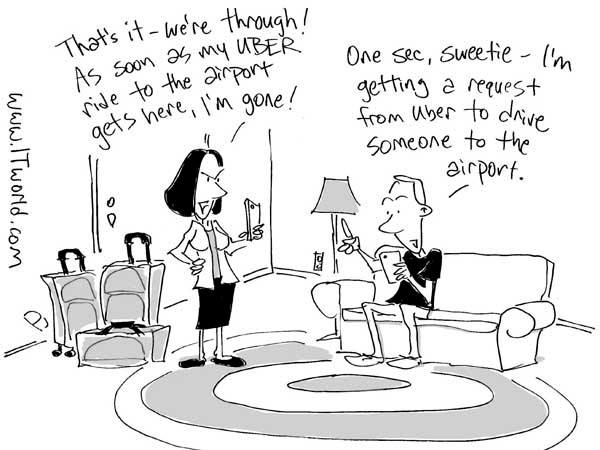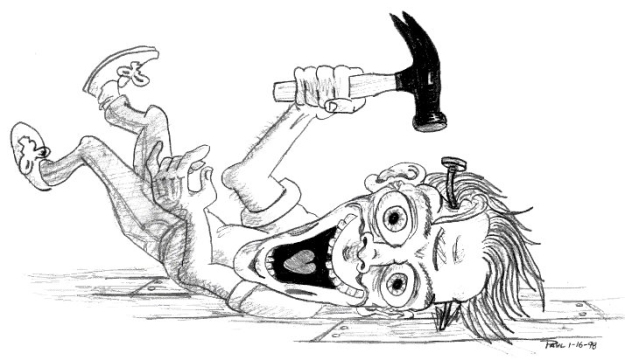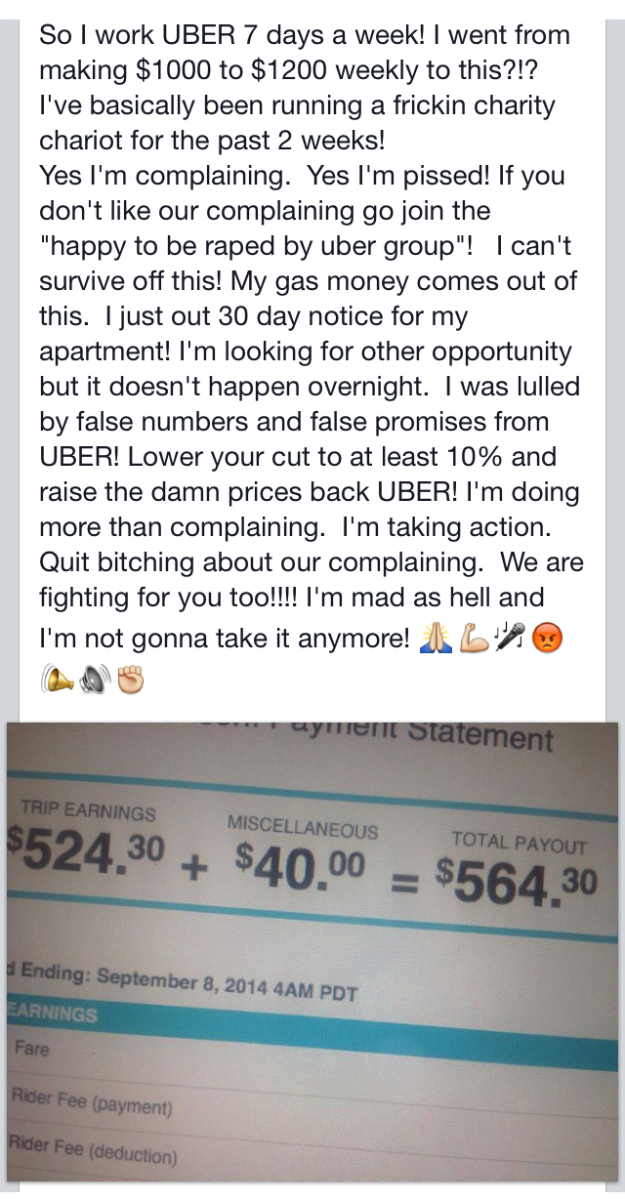
[Part of this article originally appeared in my I Drive S.F. column for the S.F. Examiner. This expanded version is from the zine Behind the Wheel 3: From Uber/Lyft to Taxi. To watch the video of the event click here.]
When I agreed to be on a drivers panel for the Next:Economy forum, I wasn’t exactly sure what I was getting myself into. I knew there would be three of us on the hot seat: a cab driver turned Lyft driver, a fulltime Uber driver and me, the Uber/Lyft driver who became a “cabbie.”
Since making it clear to the moderator during our preliminary interview that I was no fan of the on-demand economy, I figured I was there to be the lone naysayer, or to provide some requisite objectivity. Other speakers at the conference included the CEOs of Kickstarter, GE and Lyft, as well as David Plouffe, Uber’s Chief Adviser.
On Thursday morning, I woke up hungover with a mysterious gash in my forehead. After a quick shower, I put on a grey suit, a black shirt and my Florsheims. If I’m going to be a dancing monkey, I should at least wear a shiny red hat.
While on BART, I received word from my friend Maya that her husband had lost his battle with cancer. Even though I knew he’d been fighting the disease for a while, news of his passing hit me hard.
Bill Doyle, who used the nom de guerre Guss Dolan in his activism on the web, was a hero of mine. A major advocate for progressive politics in The City, he railed against the negative changes he saw happening around him as tech money displaced his friends and the new Silicon Valley workers took over neighborhood after neighborhood and threatened his own ability to remain in the city he loved. He spoke at public hearings about the impact of Google buses and rabidly opposed Airbnb and the rest of the so-called “sharing economy.”
I admired his tenacity and ferocious wit. When I started challenging Uber and Lyft, Bill’s encouragement meant the most to me. So while my train barreled through the Transbay Tube, I kept thinking, San Francisco lost a true citizen today.
At the Montgomery station, I climbed the escalator and walked right into the majestic Palace hotel, where the conference was being held. In the green room, I met Eric Barajas, the Uber driver, who, it turned out, organized the protest at Uber HQ in October and is just as disgruntled as I was last year, stuck in a vicious cycle with Uber, barely making enough to survive, but never enough to move on to something better.
While we waited backstage, I watched the CEO of TaskRabbit on the monitor. She seemed to be selling her company to the audience, which I thought was odd. During the Q&A, a woman asked if “Taskers” were being adequately protected from their clients.
Huh?
Who cares about workers these days?
When it was time for our panel, I walked through the curtain into the glare of stage lights. The next twenty minutes were a blur. I just imagined what Bill would say if he’d had the opportunity to voice his dissent at an event like this.
I ragged on all the proponents of the gig economy. Surprisingly, I got laughs. Both Eric and I trashed Uber. At one point, much to the audience’s delight, I got into a heated argument with Jon Kessler, the third driver, who saw the writing on the wall a year ago and leased a car to do Lyft after six years of taxi driving.
Eventually, we were ushered off stage and released into a crowded room of networkers who congratulated us on our lively panel, some comparing it to The Jerry Springer Show.
After talking to several dozen attendees, who paid $3,500 to be there, I realized the conference wasn’t a celebration of the on-demand economy. It was more of an examination of how these advances in technology will impact labor and shape the future of work. Most people I talked to were affiliated with labor organizations or non-profits. I even ran into Steven Hill, whose latest book Raw Deal: How the Uber Economy and Runaway Capitalism are Screwing American Workers rips these on-demand companies a new asshole.
Still, tech was in the air. The CEOs were there to pitch their disruptive technologies and most of what they said was obvious doublespeak. If the future of work means the end of professionalism and less need for workers, what do we do with all these people being born each day? Isn’t this what Marshall McLuhan meant when he wrote about how we’re driving into the future using only our rear view mirror?
Throughout the afternoon, I took advantage of the open bar, sampled the free food and marveled at the vaulted ceilings, ornate fixtures and chandeliers. The combined experience was Orwellian and surreal.
After the conventioneers went to lunch, I wandered down Market Street with Eric and Nikko to get Chinese food by the pound at Lee’s. Nikko is a filmmaker whom I met at an Uber protest the previous year. He was at the convention as Eric’s guest.
Over chow mein and fried rice, we talked about feeling out of place at the convention. As much as these people seemed to like us because of our performance, there was something off-putting about their acknowledgment. It was obvious they weren’t around real workers much, despite claiming to fight for the rights of workers.
Then we discussed David Plouffe’s segment the next day and how great it would be to confront him during the Q&A session that would follow. On video.
Hahaha. We all laughed. That would be awesome!
But wait! Don’t we have badges for the entire convention? They told us we could come back the next day.
The more we talked about it the more we realized this opportunity was too good to pass up. A plan began to form quickly. We went back to the Palace and, in the extravagant lobby, hatched the plan.
After spitballing a bunch of ideas, we concluded that Eric should do the talking. He should just get up and speak his mind. No script. The confrontation would have more of an impact if Eric questioned Uber’s claims of helping working people when working people like himself weren’t able to survive driving for Uber.
Eric was the real deal. He came off as a genuine hard-working parent effortlessly, because that’s who he is. Eric lives in Fairfield. Sometimes, he gets so tired, instead of driving home, he sleeps in his car. When he wakes up, he starts driving again. He doesn’t see his wife or his kids as much as he’d like because he’s too busy trying to fulfill the promise of this “flexible job” to be able to tuck his kids in at night.

The next morning, I headed into The City. Nikko and Eric were already there, ready to go. After watching a few presentations, including the CEO of Microsoft talk about “augmented workers,” it was time for Plouffe to hit the stage.
There was something surreal about seeing his smug face in person, as he bragged about how Uber changes peoples’ lives for the better, how they’re helping the middle class earn extra money, how the flexibility of driving for Uber is great for people with regular jobs so they can tuck their kids in at night… I resisted the urge to shout rebuttals.
“We’ve onboarded thousands of drivers,” he said proudly. “And in the process helped the environment by taking cars off the road.”
I wanted to scream, You can’t add thousands of cars TO the road while taking thousands OFF the road at the same time! It’s one or the other!
He spoke at length about the independent contractor business model, pointing out that they aren’t the first to use it. And that based on their “research” drivers prefer flexibility over a set schedule.
When asked about disrupting the taxi industry, he said, “That’s not something they even think about.”
When Tim O’Reilly, the moderator, brought up our panel from the previous day, Plouffe evaded the question. He was there to sell an idea and anything that contradicted his narrative was irrelevant. Plouffe is a compelling speaker. His carefully crafted presentation was proof that if you tell a lie long enough and tell it well enough, people will believe it, no matter how much evidence there is to the contrary.
When it came time for the Q&A, Eric got up quickly to be the first in line to ask a question.
“I just wanted to ask how it’s possible Uber is helping the economy when I’m working full time, eleven hour days, six days a week, and I am barely making minimum wage. After all the expenses are factored in, I don’t know whether to pay my phone bill or my PG&E bill.”
Plouffe, slightly taken aback, suggested that he get together with Uber and talk about options…
Eric expressed concern that he would be deactivated for speaking out. But Plouffe assured him he wouldn’t be deactivated for speaking his mind, pointing out that the rating system was only used to determine driver quality. Not for retaliation.
After Plouffe left the stage, everyone wanted a piece of Eric. Champions of workers’ rights and labor reformers wanted him to join their cause. One woman wanted him to speak at a Wal-Mart workers’ rally later in the month.
I faded into the background. Eric is a compelling figure: the perfect example of a hard working family man just trying to survive in the world.
After that, we had lunch in the ballroom. They put out quite a spread. We started off with a Caesar salad, followed by salmon with a tasty lemon and butter sauce, white rice, two asparagus spears and some kind of couscous concoction. For desert, a chocolate tart and a cup of coffee.
Once I’d finished eating, I said what I wish I’d said on stage, but even though I spoke loudly, only the people at our table could hear me:
“A friend of mine died from cancer yesterday. For two days I’ve been listening to presenters tout this new technology that will outsource work to machines and amateurs and all I can think is, find a cure for cancer and then I’ll be fucking impressed.”
With that, I wiped my mouth on the fancy cloth napkin, stood up, walked out of the Palace hotel and took BART back to Oakland.

The next day, Nikko called to tell me that Eric was kicked off the Uber platform. He was able to log in to the app, but he wasn’t receiving ride requests. He drove around The City for three hours without a single ride.
Unbelievable. Despite Plouffe’s claims on stage, in front of thousands of people, Uber retaliated. Even though several news sites, Business Insider, Fortune and the San Francisco Chronicle, had all written stories about the confrontation, they went ahead and cut him off.
I immediately phoned Eric. He told me that some high level official at Uber was leaving him messages. They wanted him to come to Uber headquarters and “discuss his situation.”
Eric didn’t trust them and didn’t want to go alone. He never returned their calls. He told Tim O’Reilly, the founder of the convention, about what happened and Tim offered to go to the Uber offices with him.
Late that night, Eric went over to Nikko’s apartment. Nikko is also an active Uber driver and they opened their apps next to each other on video. While Nikko’s phone received request after request, Eric’s phone sat idle.
With undisputable proof, the next day, I emailed Joe Fitzgerald at the Examiner. He got in touch with Eric.
Joe contacted Uber. They made some bullshit excuse about a problem with his account, but it was obvious what happened. They’d blocked his access to the app for publically calling them out.
After Joe’s story hit the internet, Eric started received ride requests again.
As if nothing had ever happened.
Pretty fucked up, right?
Well… just like every other negative story about Uber, as soon as the news cycle revolved, everyone moved on to the next routine atrocity…
Still, Eric, Nikko and I all felt a tinge of pride that, even though we weren’t able to hurt Uber’s image, at least we gave them a black eye.
[Images from the Next:Economy panel. Watch the entire panel discussion here.]
















































